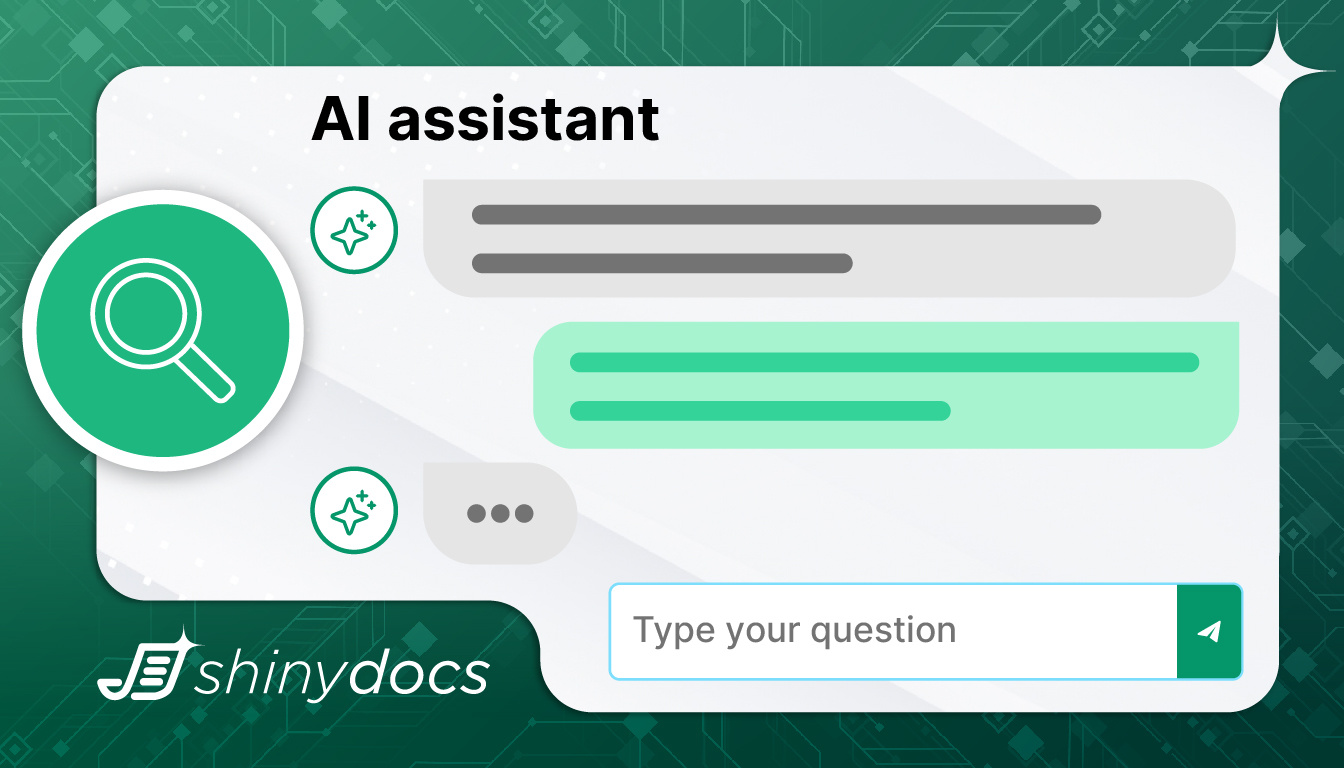(Approx. 5 mins read)
What Is Automated Content Identification? The IT Leader’s Guide to Smarter Data Management
September 29, 2025
(Approx. 4 mins read)
Maximize Your Most Valuable Assets: People, Data, and the Tech That Brings Them to Life
September 3, 2025
(Approx. 3 mins read)
(Approx. 2 mins read)
AI Data Extraction That Actually Works: Make Sense of Your Legacy Documents
September 19, 2025
(Approx. 3 mins read)
The Future of Enterprise AI: 10 Game-Changing Predictions
April 23, 2025
(Approx. 7 mins read)
Data Discovery vs Data Catalog: Understanding the Difference
October 10, 2024
Effective data management is crucial for enterprises looking to gain insights and drive decision-making. Two important concepts that often come up in this context are data discovery and data cataloging. While both play pivotal roles in data management, they serve different purposes and are used in distinct ways. This blog will explore the differences between data discovery and data cataloging, their unique benefits, and how they complement each other in a comprehensive data strategy.
What is Data Discovery?
Definition
Data discovery is the process of identifying patterns, correlations, and insights within datasets. It involves exploring and analyzing data to uncover hidden trends and relationships that can inform business decisions. Data discovery is often facilitated by interactive tools and visualizations, allowing users to drill down into data and perform ad-hoc analyses.
Key Components
- Data Profiling: Understanding the structure, content, and quality of data.
- Data Visualization: Using charts, graphs, and other visual tools to represent data insights.
- Exploratory Data Analysis (EDA): Techniques for analyzing data sets to summarize their main characteristics.
- Self-Service Analytics: Empowering users to explore data without needing extensive technical expertise.
Benefits of Data Discovery
- Enhanced Insight Generation: Quickly uncover hidden patterns and relationships within data.
- User Empowerment: Enables business users to explore data independently, reducing reliance on IT.
- Faster Decision-Making: Real-time data exploration leads to quicker insights and actions.
What is a Data Catalog?
Definition
A data catalog is a comprehensive inventory of data assets within an organization. It provides metadata about data sets, including their source, usage, and lineage, making it easier for users to find and understand the data available to them. Data catalogs often include features like search functionality, data lineage tracking, and user annotations to facilitate data governance and collaboration.
Key Components
- Metadata Management: Collecting and organizing metadata about data assets.
- Data Lineage: Tracking the origin and transformations of data throughout its lifecycle.
- Search and Discovery: Enabling users to find relevant data quickly through search functionality.
- Data Governance: Ensuring data quality, compliance, and security through policies and controls.
Benefits of a Data Catalog
- Improved Data Governance: Provides a centralized repository for managing data policies and ensuring compliance.
- Enhanced Data Accessibility: Makes it easier for users to find and understand data assets within the organization.
- Collaboration and Sharing: Facilitates collaboration by allowing users to annotate and share data insights.
Data Discovery vs Data Catalog: Key Differences
Objective
Data Discovery
Exploratory Focus: The primary goal of data discovery is to explore and analyze data to uncover hidden patterns, trends, and insights. This process is inherently investigative and allows users to interact with data in a dynamic way. The focus is on finding relationships and anomalies that might not be apparent in pre-defined reports or traditional analysis methods.
- Uncover Hidden Insights: Through data discovery, users can identify unexpected correlations and trends that can inform strategic decisions.
- Flexible Exploration: Users can navigate through data freely, asking new questions and pursuing lines of inquiry as they arise, without being constrained by predefined structures.
User-Driven Analysis: Data discovery emphasizes a user-driven approach where business users, analysts, and non-technical staff can independently explore and analyze data. This autonomy reduces the dependency on IT and allows users to derive insights quickly, responding to business needs in real-time.
- Empowers Users: By providing tools that are accessible to non-technical users, data discovery empowers a broader range of employees to participate in data analysis.
- Rapid Insights: The ability to perform ad-hoc analysis and create custom visualizations enables users to generate insights swiftly, facilitating timely decision-making.
Data Catalog
Organizational Focus: The main objective of a data catalog is to organize and inventory all data assets within an organization. It aims to create a comprehensive and easily searchable repository that provides users with a clear understanding of what data is available and how it can be used.
- Centralized Data Repository: A data catalog serves as a single source of truth, consolidating information about data assets from various sources.
- Improved Accessibility: By cataloging data assets, it becomes easier for users to find and access the data they need, enhancing overall productivity.
Metadata Management: Data catalogs focus on managing metadata—the data about data. This includes details such as data source, creation date, usage, and lineage. Effective metadata management improves data governance and ensures that data assets are properly documented and understood.
- Contextual Information: Metadata provides essential context that helps users understand the provenance, structure, and relevance of data.
- Data Governance: Managing metadata helps ensure compliance with data governance policies and standards, maintaining data quality and security.
Approach
Data Discovery
Interactive and Visual: Data discovery relies heavily on interactive and visual tools for analysis. These tools, such as dashboards, charts, and graphs, allow users to visualize data trends and patterns easily. The visual nature of these tools makes data more accessible and comprehensible to non-technical users.
- Engaging Visuals: Interactive visualizations help users to see data in new ways, making it easier to identify trends and outliers.
- User-Friendly Interfaces: Tools designed for data discovery often feature intuitive interfaces that simplify the exploration process.
Ad-Hoc Analysis: Supports the ability to perform ad-hoc queries and analyses, enabling users to ask spontaneous questions and explore data in real-time. This approach is crucial for addressing immediate business questions and hypotheses without waiting for formal reports to be generated.
- Immediate Inquiry: Users can investigate specific questions as they arise, leading to quicker problem-solving and insight generation.
- Dynamic Analysis: The flexibility to adjust queries and explore different data dimensions on the fly fosters a deeper understanding of the data.
Data Catalog
Systematic and Structured: Data cataloging involves a systematic and structured approach to collecting and organizing metadata. This ensures consistency and reliability in how data assets are documented and managed.
- Standardized Metadata: Consistent metadata formats and structures help maintain clarity and accuracy across the data catalog.
- Organized Documentation: Systematic organization makes it easier to maintain and update the catalog as new data assets are added.
Search and Retrieval: Provides robust search functionality to quickly locate data assets. This search capability is essential for users to efficiently find the data they need for their analyses and decision-making processes.
- Efficient Search: Advanced search features allow users to find relevant data quickly using keywords, tags, and filters.
- Comprehensive Retrieval: Users can access detailed information about data assets, including metadata and lineage, to better understand the data’s context and usage.
Data Types
Data Discovery
Structured and Unstructured Data: Data discovery tools are designed to handle a variety of data types, including structured data from databases and unstructured data such as text, images, and social media content. This versatility enables a more holistic analysis of different data sources.
- Diverse Data Sources: Capable of integrating data from multiple sources, enhancing the breadth and depth of analysis.
- Advanced Algorithms: Uses machine learning and other advanced techniques to process and analyze unstructured data, identifying patterns and insights that might be missed by traditional methods.
Pattern Recognition: Employs sophisticated algorithms to identify patterns and trends within diverse datasets. This capability is crucial for uncovering insights that can drive strategic decisions.
- Machine Learning: Utilizes machine learning models to detect complex patterns and correlations.
- Data Mining: Engages in data mining practices to extract useful information from large datasets.
Data Catalog
Primarily Structured Data: Focuses on cataloging structured data assets, though it can also include metadata about unstructured data. The primary aim is to provide a clear and comprehensive inventory of an organization’s structured data resources.
- Structured Data Focus: Emphasizes well-defined data formats typical of relational databases and data warehouses.
- Metadata for Unstructured Data: Can include metadata for unstructured data, providing context and information about these assets even if they are not directly cataloged.
Metadata Focus: Centers around managing metadata, providing detailed information about data sources, usage, and transformations. This focus helps users understand the data’s lineage and governance aspects.
- Comprehensive Metadata: Includes extensive details about data attributes, sources, and history.
- Contextual Insights: Metadata offers insights into the data’s context, making it easier for users to assess its relevance and reliability.
Users
Data Discovery
Business Users and Analysts: Designed for use by business users, data analysts, and non-technical staff. The intuitive and user-friendly tools enable these users to explore and analyze data independently, without needing deep technical knowledge.
- Broad User Base: Accessible to a wide range of users within the organization, promoting widespread data-driven decision-making.
- Empowerment: Empowers users to perform their own analyses, reducing the bottleneck often created by reliance on IT departments.
Empowerment and Independence: Encourages users to conduct their own data explorations and analyses, fostering a culture of self-service analytics. This independence accelerates the pace of insights and reduces the burden on IT resources.
- Self-Service Analytics: Tools designed for self-service enable users to generate their own reports and visualizations.
- Rapid Insights: Users can quickly derive insights from data, facilitating more agile decision-making processes.
Data Catalog
Data Stewards and IT Professionals: Typically used by data stewards, IT professionals, and data governance teams to manage and oversee data assets. These users are responsible for maintaining data quality, security, and compliance.
- Specialized Roles: Involves users with specialized knowledge of data management and governance practices.
- Governance Focus: Ensures that data assets are properly documented, secured, and compliant with regulatory standards.
Collaboration and Governance: Facilitates collaboration among various stakeholders and ensures robust data governance through organized metadata and comprehensive documentation.
- Collaboration Tools: Features that allow users to annotate, comment on, and share data insights foster collaboration.
- Governance Mechanisms: Provides tools and frameworks to enforce data governance policies and standards across the organization.
How Data Discovery and Data Catalogs Complement Each Other
While data discovery and data cataloging serve different purposes, they are complementary processes that together enhance an organization’s data management capabilities.
Synergistic Benefits
- Enhanced Data Accessibility: Data catalogs make it easy to find and understand data, providing a foundation for effective data discovery.
- Improved Data Quality and Governance: By cataloging data and managing metadata, organizations ensure that data used in discovery is accurate and compliant with governance policies.
- Comprehensive Data Strategy: Combining data discovery and cataloging allows organizations to leverage the strengths of both, driving better insights and more informed decision-making.
Implementation Strategies
- Integrated Platforms: Use integrated data management platforms that support both data discovery and cataloging functionalities.
- User Training and Adoption: Ensure that users are trained in both data discovery tools and data cataloging practices to maximize the benefits of both.
- Data Governance Framework: Implement a robust data governance framework that incorporates both discovery and cataloging to ensure data quality, security, and compliance.
Understanding the differences between data discovery and data cataloging is crucial for effective data management. Data discovery focuses on exploring data to uncover hidden insights, while data cataloging organizes and inventories data assets to improve accessibility and governance. By integrating both approaches, enterprises can enhance their data strategy, driving better insights, compliance, and decision-making.
Key Takeaways
- Data Discovery: Focuses on exploratory analysis to find hidden patterns and trends using interactive and visual tools.
- Data Catalog: Organizes and inventories data assets, providing metadata and ensuring data governance.
- Complementary Roles: Together, data discovery and cataloging enhance data accessibility, quality, and governance.
- Implementation: Use integrated platforms, provide user training, and implement a strong data governance framework.
- Strategic Value: Leveraging both approaches drives better insights and more informed decision-making.
About Shinydocs
Shinydocs automates the process of finding, identifying, and actioning the exponentially growing amount of unstructured data, content, and files stored across your business.
Our solutions and experienced team work together to give organizations an enhanced understanding of their content to drive key business decisions, reduce the risk of unmanaged sensitive information, and improve the efficiency of business processes.
We believe that there’s a better, more intuitive way for businesses to manage their data. Request a meeting today to improve your data management, compliance, and governance.
Data governance is not just a buzzword but a foundational element of a robust data management strategy. By implementing structured data governance, organizations can reap significant benefits that enhance efficiency, compliance, and decision-making capabilities. This blog explores the top advantages of data governance, detailing how businesses can leverage this structured approach to optimize their data ecosystems.
Understanding Data Governance
Data governance involves the overall management of the availability, usability, integrity, and security of the data employed in an enterprise. A well-defined data governance framework includes policies, procedures, and plans to manage and use data effectively. Such a framework ensures data is consistent, trustworthy, and doesn’t misuse. By establishing clear accountability for the management of data assets, organizations can ensure that data is used properly to achieve business goals.
10 Benefits of Data Governance
1. Enhanced Data Quality and Consistency
One of the primary benefits of data governance is the significant improvement in data quality and consistency. With data governance policies in place, data is routinely checked for errors, inconsistencies are corrected, and a standard format is used across the organization. This results in cleaner data, which is crucial for making accurate business decisions and reducing the likelihood of errors impacting the operational processes.
2. Improved Compliance and Reduced Risk
Data governance frameworks aid organizations in complying with various regulatory requirements that dictate how data should be managed and protected. Whether it’s GDPR, HIPAA, or other privacy laws, data governance ensures that companies meet these standards, thereby reducing the risk of costly fines and legal issues. Moreover, data governance involves documenting how data is stored, used, and archived, which simplifies compliance reporting and audits.
3. Increased Operational Efficiency
With a proper data governance strategy, organizations can streamline their internal operations. Access to high-quality and consistent data allows employees to perform their tasks more efficiently, reducing redundancies and eliminating the waste of time on data-related issues. Data governance also supports operational efficiency by identifying and eliminating duplicated efforts and by facilitating better resource management.
4. Better Decision-Making
Data governance provides a framework that ensures data is accurate and available to decision-makers. This accessibility allows executives and managers to rely on data when making critical business decisions. Accurate data analytics lead to better forecasting, strategic planning, and tactical decision-making that align with the company’s overall goals and objectives.
5. Strategic Data Management
Effective data governance helps organizations treat data as a strategic asset. It supports a better alignment between IT and business strategies, ensuring that data initiatives support overarching business objectives. Data governance frameworks help in prioritizing data-related projects, allocating resources effectively, and setting realistic timelines for data projects, which are aligned with business needs.
6. Enhanced Revenue Opportunities
With improved data quality and analytics, businesses can identify new revenue opportunities more effectively. Data governance allows for better customer insights, improved market analysis, and targeted marketing strategies, which can lead to new products and services, improved customer satisfaction, and higher sales.
7. Enhanced Data Security
Data governance includes protocols that protect data against unauthorized access and data breaches, which are critical in today’s landscape of increasing cybersecurity threats. By defining who can access data, under what circumstances, and how data access is monitored and controlled, data governance frameworks enhance the overall security posture of an organization. This proactive approach not only protects sensitive information but also builds trust with customers and stakeholders.
8. Facilitated Data Integration
Organizations often deal with data spread across various systems and formats. Data governance facilitates better data integration by standardizing data formats, definitions, and processes. This standardization makes it easier to merge data from diverse sources, reducing the complexity and time involved in data integration projects. Effective integration supports comprehensive analytics and business intelligence efforts, leading to more insightful business decisions.
9. Support for Innovation
By ensuring data is managed, maintained, and made accessible in a controlled manner, data governance creates an environment conducive to innovation. Employees can access high-quality, relevant data quickly, allowing them to explore new ideas, improve processes, and develop innovative solutions that drive business growth. Furthermore, having a solid governance structure reassures stakeholders that innovation efforts are built on reliable and secure data practices.
10. Improved Data Visibility and Accessibility
Data governance ensures that data across the organization is cataloged and indexed effectively, making it easier for users to find the data they need when they need it. This improved visibility enhances user productivity and satisfaction by minimizing the time spent searching for information. Additionally, it ensures that data silos are eliminated, allowing for a holistic view of information assets. This transparency is crucial for departments like marketing, sales, and customer service, which rely on quick access to up-to-date and complete data to perform optimally.
The benefits of data governance are clear and impactful, ranging from improved operational efficiencies and compliance to enhanced decision-making and strategic data management. By investing in a thorough data governance framework, organizations can ensure their data is an asset rather than a liability, fostering a culture of transparency and accountability in data handling. As companies increasingly rely on data to drive their operations, the implementation of solid data governance becomes not just beneficial but essential for sustainable business success.
Key Takeaways
- Enhanced Data Quality and Consistency: Implementing data governance significantly improves data quality and consistency by routinely checking for errors and ensuring a standard format across the organization. This results in cleaner data, which is essential for making accurate business decisions.
- Improved Compliance and Reduced Risk: A robust data governance framework helps organizations comply with various regulatory requirements, reducing the risk of costly fines and legal issues. Documenting how data is stored, used, and archived simplifies compliance reporting and audits.
- Increased Operational Efficiency: Data governance streamlines internal operations by providing high-quality, consistent data, reducing redundancies, and eliminating time wasted on data-related issues. This supports better resource management and operational efficiency.
- Better Decision-Making: Data governance ensures that accurate and reliable data is available to decision-makers, leading to better forecasting, strategic planning, and tactical decision-making that align with the company’s goals.
- Enhanced Data Security: By defining access protocols and monitoring data access, data governance enhances the overall security posture of an organization. This proactive approach protects sensitive information and builds trust with customers and stakeholders.
About Shinydocs
Shinydocs automates the process of finding, identifying, and actioning the exponentially growing amount of unstructured data, content, and files stored across your business.
Our solutions and experienced team work together to give organizations an enhanced understanding of their content to drive key business decisions, reduce the risk of unmanaged sensitive information, and improve the efficiency of business processes.
We believe that there’s a better, more intuitive way for businesses to manage their data. Request a meeting today to improve your data management, compliance, and governance.








